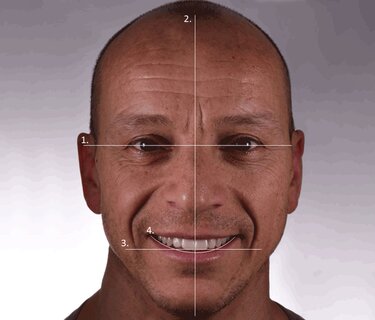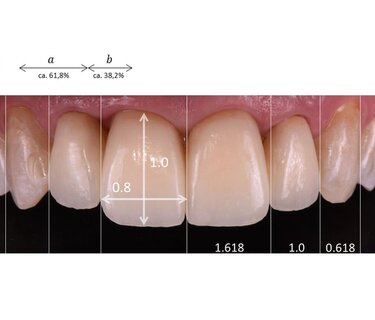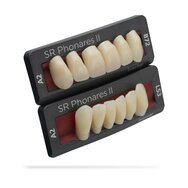Teeth are not only used for chewing. They have many more functions to fulfil. Teeth shape the lower part of our face. They affect our speech. And, not least, they are an advertisement for ourselves. Did you know that your teeth allow others to draw conclusions about your physical and psychological well-being?.
Today, more than ever before, well cared for teeth are considered an attractive characteristic. People with bright smiles look attractive to us and we enjoy communicating with them.
However, what makes a smile look bright and healthy?
Hollywood stars may immediately associate a radiant smile with ultra bright bleach shades. Yet, it is less the brightness of the teeth but rather the proportions and symmetry of the maxillary incisors that has the most esthetic impact.
Here are a few details about the essential elements that make a smile look beautiful:
For an accurate facial analysis, the following references should be studied:
-
Interpupillary line: is a horizontal line connecting the centre of the pupils.
-
Midline: is perpendicular to the interpupillary line and runs through the anterior nasal spine. Ideally, this line runs exactly through the contact area between the maxillary central incisors.
-
Incisal plane: is an auxiliary plane that runs parallel to the interpupillary line at the height of the incisal edges of the central incisors. This plane assists in determining the occlusal plane and the smile line.
-
Smile line: is the curvature of the lower lip line parallel to the curvature of the maxillary incisal edges. If the edges of the teeth follow the natural curvature of the lower lip during smiling, the smile is felt to be especially friendly.

Alongside the symmetry of the teeth in relation to the midline and a consonant smile line with a natural curvature of the incisal edges parallel to the lower lip, the tooth shape should also be taken into account when evaluating the esthetic appearance of a smile. The shape of the teeth should match the shape of the face (square, triangular, oval) and reflect the facial type and characteristics of the individual.
The factors that have the highest impact on the esthetic appearance of the smile are the width-to-length ratio of the maxillary central incisors and the proportion of the visible width of the central incisors in relation to the lateral incisors and the canines. In this context, the principle of ideal esthetic proportions (golden ratio)) comes into play. The golden ratio is a mathematical proportion (see "golden ratio" formula below) that, ideally, can be seen in the visible tooth surfaces of the maxillary anterior teeth. The ideal ratio between the length and the width of the maxillary incisors is 1 to 0.8.
The golden ratio

Receive our monthly newsletter on recently published blog articles, upcoming education programs and exciting new product campaigns!

